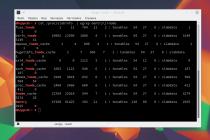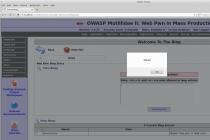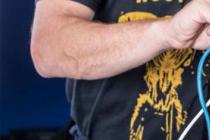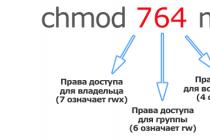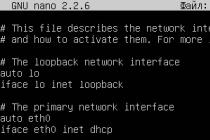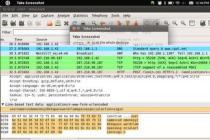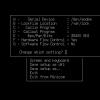Paging systems (radio paging systems) ensure efficient use of the radio channel, have a low cost, and ease of network expansion. However, this is, in fact, the only type of one-way radio communication.
To create a network and transmit messages, radio transmitters with antennas are installed in the designated area, which form the working area of the service.
3.1. Method of forming the working area:
1. Radial - one base station, used for small towns, firms and enterprises.
Rice. 3.1. Radial subscriber service scheme
2. Cellular - for big cities. The pager operates at certain frequencies. Various methods of data transmission from base stations to subscriber terminals are used.
Synchronous broadcasting - all stations work simultaneously. Strict requirements are imposed on the equipment, which significantly increase the cost of it. The data transfer rate is maximum.
Time division - base stations work one by one, retransmitting messages. The data transfer rate is reduced proportionally.
For areas remote from the main place of service, repeaters are used - re-emitters of messages with the necessary signal amplification.

Rice. 3.2. Service of subscribers in cells
3.2. Paging network structure
The structure of the main elements of the paging network is shown in Fig. 3.3.
Р / phone
Telefax
Access interface
Controller
Controller
service
Rice. 3.3. The structure of the main elements of the paging network
3.3. Functional diagram of a pager
Functionally, a pager is a receiver with a single (Fig. 3.4) or double frequency conversion. There are devices for storing and displaying information, as well as sound indication of the received message.
f prom = 455 kHz
UHF CM PPF Decoder UOHI UOI
Rice. 3.4. Functional diagram of the pager:
UHF - high frequency amplifier: CM - mixer; Get - heterodyne;
PPF - band pass filter; УОХИ - information processing and storage device;
UOI - information display device
3.4. Paging Coding Standards
The transmission of address information and messages in digital systems (including paging systems) is carried out in a specific coding format (protocol). The history of the creation and development of paging communication protocols includes more than fifteen different communication formats. The first paging protocol is the two-tone format, developed in the 50s by the MULTITON company and providing for the transmission (preceding the voice message) to the radio station of the address - two tone bursts of different frequencies.
For a long time after that, communication formats were developed and applied to ensure the operation of tone pagers. By the mid-70s of the last century, the protocols POCSAG, GOLEY, NEC, which are widely used today, were developed and implemented, providing for modulation of a high-frequency signal with a binary code.
The POCSAG protocol is the most widely used in the world. It is a universal protocol that allows digital, alphanumeric and tone messages to be transmitted at 512, 1200 and 2400 baud rates, which supports unique addressing of up to 2 million pager numbers and provides a resource of one frequency of the PWRM according to the number of subscribers served within 10 - 20 thousand.
POCSAG is the world's most widely used standard
The POCSAG protocol was developed by the British Post Office. It provides data transfer rates of 512, 1200 and 2400 bps. Messages are transmitted in asynchronous mode: a message packet can start at any time and its length is not defined.
Messages are transmitted in packets. At the beginning of the packet there is a preamble - a code word consisting of 576 bits (a sequence of zeros and ones - 010101010 ... ..). When the preamble is received, the pager switches to the message receiving mode and performs clock synchronization.

synchronization |
|||||||||||
Code word 1 |
Code word 2 |
||||||||||
Rice. 3.5. POCSAG protocol structure
Each of the frames corresponds to a certain group of pagers. This group is simultaneously included in the message reception mode in the specified time interval - frame. All pagers scan the address field at the same time. Further, only the pager whose address is set remains in the receive mode. This saves battery power. If the message is long, it is transmitted over several bursts. The end of the message is an "empty" codeword or address of another pager. The sync word is 32 bits, each code word is 32 bits.
At a transmission rate of 2400 bps, the duration of a single bit is 0.417 μs, the preamble time is 0.24 s.
Duration of one frame tk = 2 32 0.417 μs = 26.6 ms
The duration of the transmission of one packet tp = tc 8 + 32 0.417 μs = 0.2267 s
At full load, 30 packets are transmitted with each preamble. Thus, 511 messages of 30 packets can be transmitted per hour.
The frequency range of the POCSAG system is 146-174 MHz and 403-470 MHz. The frequency band of one channel is 25 kHz.
Pan-European standard ERMES
A single frequency range was chosen: 169.425 - 169.800 MHz, which is divided into 16 radio channels of 25 kHz. The complete transmission cycle is 1 hour and consists of 60 cycles of 1 minute each. Each cycle consists of 5 subsequences of 12 s, consisting of 16 packs, designated by letters of the Latin alphabet.

Rice. 3.6. ERMES protocol structure
Groups of pagers are assigned to a specific batch and synchronously scan all radio channels. The duration of the transmission of one burst is 0.75 s. When transmitting messages on 16 frequency channels, the bursts are offset by one. Thus, an informational message addressed to a specific pager is transmitted without interruption.
A B C D E… M N O P t
Rice. 3.7. Tuning of the transmission frequency in the ERMES standard
Remember the movie Bruce Almighty? Where did the god send messages to the protagonist on a small electronic device? Today we decided to recall the pager - a symbol of prosperity in Russia in the nineties and the older brother of modern mobile phones.
Still from the movie "Bruce Almighty" (2003)
What is a pager
Thirty-year-olds may find it funny from this question, but today's schoolchildren no longer know that there was such a thing. A pager is a miniature radio receiver that allows you to receive short messages on a specific frequency. All messages are sent through the operator: you call the operator's room, dictate the message and the subscriber's number. And the operator sends a message to the addressee. Later, two-way pagers appeared, which allow communication without intermediaries.The first pager was introduced by Motorola in 1956. It received signals within a radius of 200 meters and gave out a short sound signal, for which it received its second name - beeper, from the English Beep. Then pagers were used to equip hospitals, and with the development of technology and an increase in the range, they found application in police stations and rescue services.

Still from the clip Eminem "Stan" (2000)
But miniature devices gained worldwide popularity only in the mid-80s, when in 1986 Motorola released Bravo - the most popular model of a pager with three buttons and a three-line display.
In 1996, almost 100 million people were using pagers around the world.
How the pager works
It is based on a radio receiver tuned to a specific frequency of reception of the paging company and the format of received messages. In addition, there was a decoder, a micro-computer - the "brains" of a pager, several buttons, and later - a display.
Pager block diagram
Each pager has built-in cap codes - physical addresses, personal and group. The personal address is unique for each device, and the group address is the same for all pagers with a common language coding. All cap codes are stored in the operator's database. When the client calls the operator and calls the subscriber's number, the operator finds his personal cap code and sends a message.
Paging works in different formats in different countries. The most common is the POCSAG protocol, developed in the UK in 1978. It has been used successfully so far, with a message transmission rate of 512, 1200 or 2400 bps.
The faster Flex protocol was created by Motorola in 1993. It used synchronous data transmission, messages were transmitted at 1600, 3200 and 6400 bps. Flex is capable of supporting more than 5 billion addresses - double that of POCSAG.
Especially for Europe, the ERMES protocol was developed, fully compatible with the GSM communication standard and adapted to other European developments of cellular networks. The format was created as part of the creation of a pan-European system of personal radio calling and worked in the frequency range 169.4 - 169.8 MHz.
There were three main types of devices: tone - pagers of the first generation, they are also beepers, digital - transmitted information only in digital form and text - with the help of which it was possible to send messages.
The last word in the development of paging was tweigers: equipped with a qwerty-keyboard, with two-way communication, they allowed communication without intermediaries. The first Tango tweager was released by Motorola together with the national American operator SkyTel in 1996. But even then it was clear that the age of small squeaking devices was coming to an end - the world was actively conquered by mobile communications.

Still from the film "Zero Effect" (1998)
Pagers in Russia: Pepsi, pager, MTV
Paging communication appeared in the USSR by the end of the 60s - it was used by employees of the ambulance and some government agencies. In 1979, during the preparations for the 1980 Olympics, the British company Multitone launched the Radiopoisk network in Moscow, which operated at a frequency of about 43 MHz. She solved the problem of quickly transmitting commands to the performers of the celebrations and coordinated their actions.The general public did not use pagers until the collapse of the Soviet Union.
At the height of the 90s, it was a symbol of a wealthy life: bulky mobile phones with their astronomical prices (Nokia Mobira cost $ 2,000 and weighed three kilograms), could afford a few, and pagers became more widespread. But the service was still expensive: the connection was about $ 350, and the subscription fee was $ 50-70 per month. The first Russified pager was launched on the market by the already mentioned Multitone - the MIT-472 model cost 380 dollars and could receive messages up to 7500 characters. Theoretically, this text can be sent to such a device - its volume is slightly more than 7 and a half thousand characters. The display showed a maximum of 94 characters at a time.


If there was no money, but wanted to stand out, then those who wanted to buy an electronic watch, similar to a pager, and proudly hung it on their belt.
There were dozens of paging companies throughout the country: there were no federal operators, and the number of regional ones varied greatly depending on the region.
The quality of communication depended on the number of transmitters at the operator, their power and location. For example, transmitters with a power of 350 watts and a coverage radius of 70-80 km worked at the Ostankino tower. In the late 90s, Motorola transmitters or their domestic counterparts ZhM-300 were used. Sometimes they were equipped with amplifiers.
Each operator worked at its own frequency. The company bought pagers programmed for this frequency and tuned transmitters to it. Or you could order free pagers and then tune them to your own frequency. But this option is longer, because mainly the devices were brought from Southeast Asia.
Almost the entire market was divided among 11 large companies: Mobil-Telecom, Vesso-Link, Inform-Excom and others. The share of small operators remained 3% of the total volume of clients.
According to the Goskomsvyaz (now the Ministry of Telecom and Mass Communications of the Russian Federation), the number of subscribers increased 20 times from 1994 to 1996, and by the beginning of 1998 about 300 thousand people used paging in Russia. More than 70% of the market was concentrated in Moscow and St. Petersburg: in the capital, pagers were used by 1.1% of the population, in St. Petersburg - 0.6%. By 2000, it was planned to triple the number of clients. But these plans were not destined to come true.
At the beginning of the 2000s, mobile phones began to actively displace pagers from the Russian communications market. Back in 2000, Decl was broadcasting to the younger generation: “Pepsi, pager, MTV, connect!”, And in 2005 80% of the population already had mobile phones. In 2007, the first iPhone was released.
They forgot about pagers.
Pagers today
In the mass consciousness, small black boxes have long supplanted modern smartphones, but pagers are still alive today. They are used by employees of hospitals for emergency communications, the Ministry of Emergency Situations, the Ministry of Internal Affairs, large car service centers, and some nuclear power plants.In the States, pagers are used in hospitals, rescue services, and the police - we can say that they returned home after their march around the world. Having received the message, the doctor rushes to the operating room, the rescuers - to the call, the police officers - to the scene.
Today there are two paging companies operating in Moscow - Telecomt and Inform-Ekskom. We talked to a person who has been involved in this type of communication since 1993, and this is what he told us.
The coverage density of the paging tower is higher: it works where it does not catch cellular communication, and the gateways are not so loaded, so it will be faster to send an emergency message to the pager. The device does not need to be charged, just change the AAA battery about once a month.
Private paging systems are completely under the control of the customer: they are created according to his requirements, do not depend on either cellular operators or overloads in power networks, and can work for a long time in the absence of centralized power supply.
Today paging communication is cheap - the monthly subscription fee starts from 170 rubles per month, while it is impossible to steal money from the account. The price of the pager itself ranges from 700 to 2000 rubles. All these advantages, according to the remaining paging operators, will not completely oust pagers from the market.
The main elements of any pager are: a receiver, a decoder, an information processing and storage device, information display and signaling devices. The receiver is built according to a superheterodyne circuit with single or double frequency conversion.
Rice. 2.19. Block diagram of a pager with single frequency conversion
In a circuit with a single frequency conversion (Fig. 2.19), an intermediate frequency signal of 455 kHz is formed at the output of the bandpass filter, which is fed to a decoding device (decoder). With double conversion of frequency (Fig. 2.20), the first intermediate frequency is 10.7 or 21.4 MHz, the second is 455 or 30 kHz. Double conversion of frequency is used to increase the sensitivity of the receiver, which undoubtedly greatly affects the quality of its operation. The sensitivity of the receiver is determined by the strength of the electromagnetic field (μV / m), at which it is able to receive a message with a reliability of 50% with an arbitrary rotation of the antenna around the vertical axis. Different pagers (tone, numeric, or alphanumeric) have different sensitivities. For example, the sensitivity of alphanumeric pagers is about 2 times higher than that of tone pagers.
Rice. 2.20. Block diagram of a double conversion pager
The second important detail of the pager, the characteristics of which significantly affect the quality of its operation, is the antenna. As you know, the dimensions of any pager are small (60x40 mm). Naturally, the size of the antenna is also small. The antenna has the highest gain when its area is a multiple of a quarter of the square of the electromagnetic wavelength.
Paging network operators are assigned specific operating frequencies in various countries. Therefore, with the same size of pagers, and, consequently, their antennas, the reception efficiency is different. When the operating frequency changes, the so-called radiation resistance of the loop antenna changes significantly, which complicates its matching with the high-frequency amplifier of the pager receiver.
It is these factors that force specialists to resort to various ways to improve the quality of the network as a whole, one of which, very obvious, is an increase in the level of the electromagnetic field within the serviced area.
To increase the communication range, you can also use a special external loop antenna, which is used in cellular radiotelephone communication. This antenna is installed on the rear window of the car. On the inside, it has a special pager mount and a matching device. This allows you to increase the pager sensitivity by about 10 dB.
An important mode of operation of any pager is the power saving mode. Basically, the battery power is consumed by powering the high-frequency stages of the receiver and the audio signaling devices. Therefore, the pager may not work constantly, but at certain intervals, which significantly increases the battery life. This mode of pager operation is possible due to the special structure of the paging protocol. The fact is that a paging message, in addition to information for the user, contains a so-called preamble. For example, in the POCSAG standard, the preamble transmission time is 1.125 ms. This means that to determine the preamble, the pager only needs to turn on for 100 ms every second. If the preamble is found, the receiver remains on to receive the message, if there is no preamble, the pager receiver is turned off.
I am giving you a 200 meter transmitter (pager) diagram for a simple signaling device.
For testing, a signaling device was taken from a fishing store, in the photo below
It works on a simple crown, as in all such alarms, there is a socket on the bottom for connecting additional equipment; a small current is supplied from this output when biting.
I took this circuit for the pager
Only I changed it a little, see below
True, then I remade the board just for the case, put LEDs, a vibration motor and a buzzer. I made two modes: 1-LED and vibration (they work constantly);
2-LED, vibration and buzzer
This is how everything fit into the case (of the receiver)
And this is how the transmitter turned out
Receiver circuit
On the receiver circuit, the output to the microcontroller must be selected by trial
Transmitter circuit
Power for the circuit needs from 3 to 5 volts, if more than 5 volts, you can burn everything fucking, began to think what kind of battery to put and decided to put a small one like in the signaling for the transmitter and the crown for the receiver.
True, they are 12 and 9 volts, so I had to install a voltage regulator, it gives out 3.2 volts from 12 volts, which is just by the way
True, I don't remember exactly its name, but in a radio store you can explain to the seller what exactly is needed.
Another nest was bred for the experiment.
I connected it to the speaker
As we know, when biting, the indicator emits a sound signal and for another 10-20 seconds the LED is on, and so a small current is supplied to the standard socket during the bite, BUT it is supplied to it all the time while the LED is blinking or on for 10-20 seconds, like would be okay and this can be neglected, the main thing is that he would tell us that there was a bite.
But I went a little further, I connected 2 more wires to the speaker and brought out a separate jack (pictured above)
Maybe in the future I will make it inside the case, but for now it will do. And now if there is a false bite, then our transmitter will transmit only a couple of peaks and that's it, and will not beep for 20 seconds. And if it bites like that, the transmitter will transmit the same number of peaks as the signaling device.

